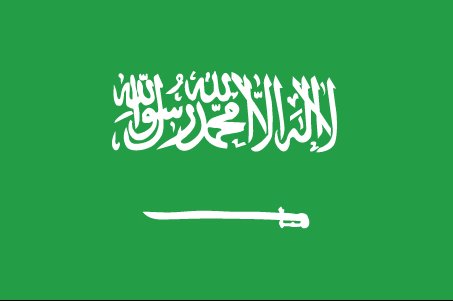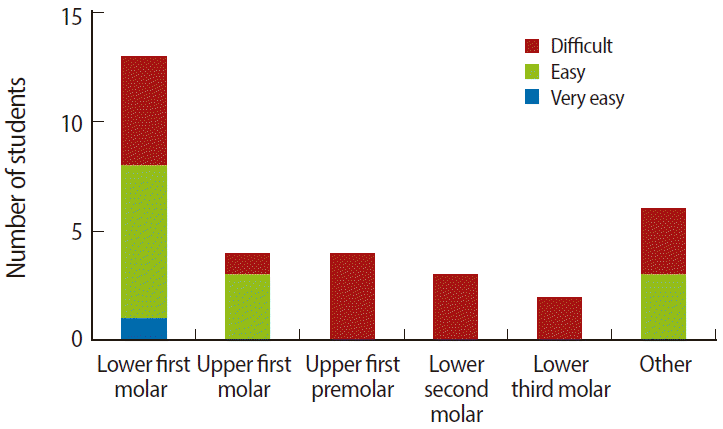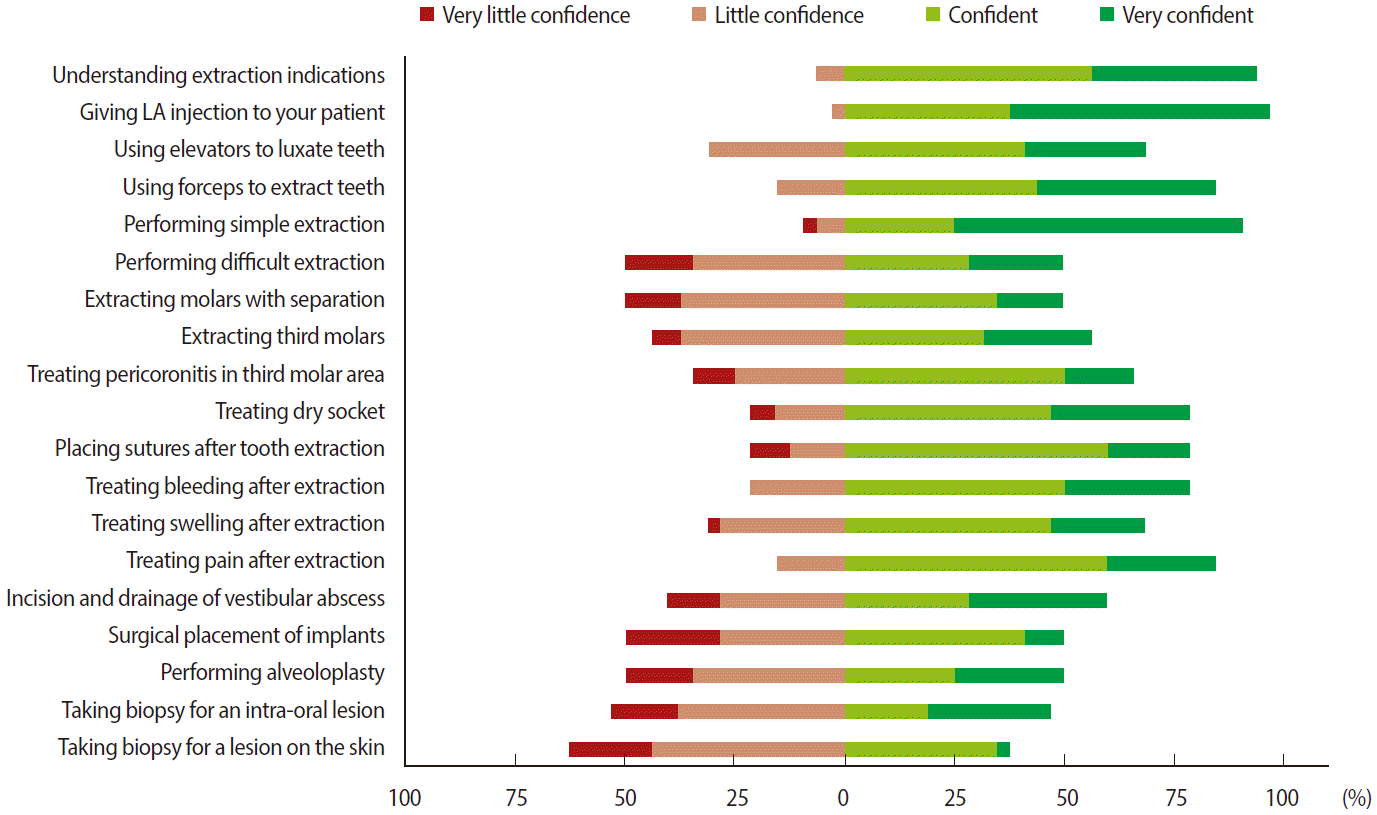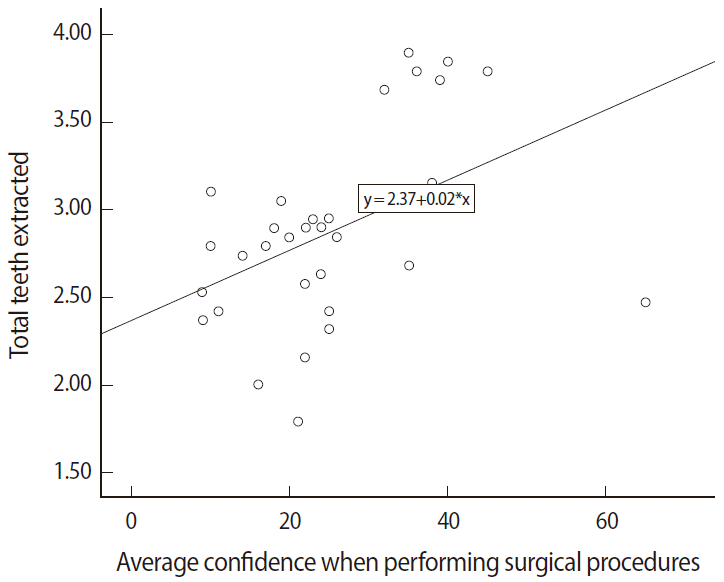Articles
- Page Path
- HOME > J Educ Eval Health Prof > Volume 12; 2015 > Article
-
Research Article
Dental students’ perceptions of undergraduate clinical training in oral and maxillofacial surgery in an integrated curriculum in Saudi Arabia -
Mahmoud Al-Dajani*

-
DOI: https://doi.org/10.3352/jeehp.2015.12.45
Published online: September 24, 2015
Department of Maxillofacial Surgery and Diagnostic Sciences, College of Dentistry, Aljouf University, Sakaka, Saudi Arabia
- *Corresponding email: mahmouddajani@yahoo.com
©2015, National Health Personnel Licensing Examination Board of the Republic of Korea
This is an open-access article distributed under the terms of the Creative Commons Attribution License, which permits unrestricted use, distribution, and reproduction in any medium, provided the original work is properly cited.
Abstract
-
Purpose:
- The aim was to understand dental students’ experiences with oral and maxillofacial surgery (OMS) teaching, their confidence levels in performing routine dento-alveolar operations, and the relationship between the students’ confidence level and the number of teeth extracted during the clinical practice.
-
Methods:
- The survey questionnaire was distributed to 32 students at Aljouf University College of Dentistry, Saudi Arabia during their fourth and fifth year in 2015. Respondents were asked to rate 19 items, which represent a student’s confidence in performing routine surgical interventions, using a four-point Likert scale (1=very little confidence, 4=very confident). A multivariate regression was computed between average confidence and the variables: weekly hours devoted to studying oral and maxillofacial surgery, college grade point average, and the total number of teeth extracted.
-
Results:
- The response rate was 100%. Students revealed the highest level of confidence in giving local anesthesia (96.9%), understanding extraction indications (93.8%), and performing simple extractions (90.6%). Less confidence was shown with handling difficult extractions (50.0%), extracting molars with separation (50.0%) or extracting third molars (56.3%). The average confidence in performing surgical procedures was 2.88 (SD=0.55), ranging from 1.79 to 3.89. A given student’s confidence increased with an increase in the total number of teeth extracted (P=0.003).
-
Conclusion:
- It reveals a significant impact of undergraduate clinical training on students’ confidence in performing oral and maxillofacial surgery clinical procedures: The more clinical experience the students had, the more confidence they reported.
- Undergraduate teaching in the academic field of oral and maxillofacial surgery (OMS) emphasizes preparing competent general dentists who can examine, diagnose, surgically treat, and manage diseases and disorders in the oral and maxillofacial region of the human body [1,2]. Comprehensive patient care is the backbone of clinical training at College of Dentistry, Aljouf University, Saudi Arabia, where the fourth and fifth year undergraduate students treat patients who have diverse needs. This comprehensive care model is boosted with an integrated dental curriculum, in which the curriculum is divided into a number of interdisciplinary blocks instead of being delivered in discrete discipline-based courses. While few studies have been conducted to evaluate the confidence of undergraduate dental students around the time of their graduation [3,4], none of these studies specifically measured students’ confidence with their OMS training. This study aimed to evaluate students’ perceptions, experiences, and confidence levels with OMS tasks at the Aljouf University College of Dentistry, Saudi Arabia.
INTRODUCTION
- Participants, place of study, and year of study
- This study included undergraduate students in either of the last two years of the dental program at the College of Dentistry, Aljouf University, Saudi Arabia in 2015. Our study has been approved by the Research Ethics Board at Aljouf University, and has been conducted in full accordance with the World Medical Association Declaration of Helsinki.
- Study design
- This investigation is a cross-sectional observational study.
- Survey tool
- A self-administered survey questionnaire was distributed to 32 fourth- and fifth-year students who are expected to complete their studies this year or next. A cover letter accompanied the survey providing a brief description about the study. All participants were 18 years of age and over. The data were anonymized and unidentifiable prior to analysis. Three professors pre-tested the survey to assure that questions were well written and captured the information we intended to collect. Moreover, the survey was pilot-tested on five randomly selected fourth- and fifth-year students to assess the whole questionnaire under actual survey conditions. Since the targeted population was small (N=32), all current fourth- and fifth-year students were surveyed.
- Statistical analysis
- Univariate descriptive statistics were used to describe and summarize the characteristics of participants, and included calculating means, percentages and their corresponding standard deviations/confidence intervals as indicated. The average confidence in performing surgical procedures was computed from the 19 variables, which represented a student’s confidence in performing routine surgical interventions. Levels of confidence were ranked using a four-point Likert scale (i.e., very little confidence, little confidence, confident, very confident), and assigned the numeric values: 1, 2, 3, and 4, respectively. In bivariate analysis, a chi-squared test (χ²) was used to evaluate the statistical differences between the number of teeth extracted and confidence levels in performing surgical procedures. A Pearson product-moment correlation coefficient was calculated to assess the relationship between the total number of teeth extracted and the average confidence in performing surgical procedures. A multivariate linear regression model was computed between the average confidence (dependent variable) and the following variables: weekly hours devoted to study of OMS, college grade point average (GPA), as well as the total number of teeth extracted by the student. Data were analysed using the Statistical Package for the Social Sciences (SPSS) version 21.0.
- Ethical approval
- A statement was added to the survey informing the participant that completion and return of the survey was considered implied consent. This method of consent was approved by the Research Ethics Board at Aljouf University. Participation in this study was voluntary. Students were allowed to decline or withdraw from participation at any time without any negative consequences. As per privacy and confidentiality, no identifiable data were collected (i.e., participants’ name, full address, or postal code).
METHODS
- Participants’ characteristics
- Thirty-two dental students reported devoting an average of 4.7 hours every week studying material related to the discipline of oral and maxillofacial surgery. The mean for the total number of teeth extracted by the students was 25.3 teeth (SD=12.15) ranging from 9 to 65 teeth. 75% of the students placed suture(s) after extracting teeth, while 25% had the experience of treating a dry socket (alveolar osteitis) whenever indicated during their undergraduate clinical training. Interestingly, none of the students mentioned that they would not be referring extractions to oral and maxillofacial surgeon. Table 1 illustrates the characteristics of surveyed students and the routine surgical procedures they performed in the dental school clinics.
- First oral and maxillofacial surgery experience for undergraduate students
- Fig. 1 illustrates the distribution of first extraction procedures performed by the 32 students according to the type of tooth extracted and the self-reported degree of extraction difficulty. 40.6% of students perceived having the lower first molar as their first tooth to extract. 56.3% perceived that their first extraction procedure was difficult. No one rated the first extraction procedure “very difficult”.
- Confidence levels in performing oral and maxillofacial surgery procedures
- As shown in Fig. 2, students in both years revealed the highest level of confidence in giving local anesthesia (96.9%), understanding extraction indications (93.8%), and performing simple extractions (90.6%); whereas the lowest level of confidence was perceived while taking a biopsy of an intra-oral lesion (46.9%) or a lesion on the skin (37.5%). Compared to their confidence in performing simple extractions, they reported relatively less confidence whenever the surgical intervention involved handling of difficult extractions (50.0%), extracting molars with separation (50.0%), or extracting third molars (56.3%). Fig. 3 demonstrates differences in confidence scores between fourth- and fifth-year students. Compared to their counterpart in the fourth-year, fifth-year students displayed significantly higher confidence in the following: understanding extraction indications (P=0.012); administering an topica anesthetics injection to your patient (P=0.005); using elevators to luxate teeth (P=0.040); using forceps to extract teeth (P=0.031); performing a difficult extraction (P= 0.032); extracting molars with separation (P=0.019); treating swelling after extraction (P=0.032); and surgical placement of implants (P=0.011). Nevertheless, fourth- and fifth-year students showed no statistically significant difference in the following: performing simple extraction (P=0.330); extracting third molars (P=0.357); treating pericoronitis in the third molar area (P=0.497); treating a dry socket (P=0.519); placing sutures after tooth extraction (P=0.613); treating bleeding after extraction (P=0.141); treating pain after extraction (v=0.686); incision and drainage of vestibular abscess (P=0.654); performing alveoloplasty (P=0.273); taking a biopsy for an intra-oral lesion (P=0.241); and taking a biopsy for a lesion on the skin (v=0.478).
- Degree of confidence and the number of teeth extracted
- With the increase in the total number of extractions completed, the student’s confidence level increased significantly with regard to the following: using elevators to luxate teeth (χ²; P=0.013); using forceps to extract teeth (χ²; P=0.013); performing a difficult extraction (χ²; P=0.042); and treating bleeding after dental extraction (χ²; P=0.041). The average confidence in performing surgical procedures was 2.88 (SD=0.55), ranging from 1.79 to 3.89. Overall, there was a moderately positive significant correlation between the total number of teeth extracted and the average confidence in performing surgical procedures (r=0.449, n=32, P=0.01). A scatterplot summarizes the results of Pearson product-moment correlation coefficient analysis (Fig. 4). As per the multivariate linear regression analysis, a student’s confidence increased when the total number of teeth extracted increased (P=0.003) (Table 2).
RESULTS
- The integrated dental curriculum at the Aljouf University College of Dentistry is educationally beneficial to its dental students, enhancing their acquisition of an increasingly large body of dental information in a more effective and efficient way through the integration of basic science and dental information and placing both in relevant clinical contexts. The OMS teaching is designed to meet the certification requirements of the Saudi Commission for Health Specialties, Ministry of Health, Saudi Arabia, and includes integrated didactic and clinical instruction in dento-alveolar surgery, anatomy, pathology, management of medically compromised patients, and local anesthesia and pain control. The OMS teaching provides students with clinical training in local anesthetic techniques, dental extractions, and minor oral surgeries in order to enhance the skills acquired during undergraduate education. We believe that current OMS teaching, as an essential part of an integrated dental curriculum, encourages students not only to think about dental care issues more comprehensively, but also to build treatment plans and make decisions based on both fundamental basic science and evidence-based clinical principles.
- Above finding revealsthat the more extractions the students completed, the more confidence they gained in handling extraction instruments—mainly elevators and forceps, managing difficult extractions, and treating post-extraction hemorrhage. On the other hand, both college GPA and weekly hours devoted to study did not seem to contribute to students’ confidence. While the increase in the time devoted to study might reinforce a student’s ability to memorize taught material, this added time may not significantly increase students’ clinical confidence. The non-significant effect of GPA renews the argument over the sufficiency of GPA in evaluating dental student progress mainly in clinical settings [5].
- The students displayed high confidence in performing simple clinical procedures, while they were less confident in performing complex procedures. A good example is the high confidence among students when performing simple extractions, while difficult surgical extractions were accompanied with less confidence. Nevertheless, our study demonstrates that the more teeth the students extracted, the more clinical confidence they displayed. This significant improvement in students’ confidence can be related to their live interaction with patients combined with direct supervision by knowledgeable faculty members [6].
- Future research directions should investigate the possible role of internships as well as dental outreach training in primary care settings in improving students’ confidence in handling clinical interventions in general, and OMS procedures in particular. There is a need for multi-school studies that examine the differences between traditional curriculum and integrated curriculum mainly with regard to students’ cognition, confidence, and acquisition.
- This study has the following limitations: The study evaluated OMS training depending on the level of confidence perceived by students. We need to keep in mind that confidence level is a subjective indicator, so confidence level cannot totally replace an assessment of the true ability or skill of a student to perform the real surgical procedure. In addition, these data represent a single dental school. Future studies should include studies of larger sample size including several dental schools from different countries.
- In conclusion, this study revealed a significant impact for undergraduate clinical training on students’ confidence in performing OMS clinical procedures: Students at the College of Dentistry, Aljouf University were more confident in performing simple surgical procedures, while they were less confident in performing complex procedures. Under the umbrella of an integrated curriculum, the more clinical experience the students have, the more confidence they will display.
DISCUSSION
Acknowledgments
SUPPLEMENTARY MATERIAL
Fig. 1.First tooth extracted by a student in the faculty clinic and self-reported degree of this extraction difficulty of 32 dental students, Aljouf University, Saudi Arabia.


Fig. 2.Level of confidence among undergraduate dental students in performing 19 routine surgical interventions of 32 dental students, Aljouf University, Saudi Arabia.


Fig. 3.Level of confidence among fourth- and fifth-year students in performing 19 routine surgical interventions of 32 dental students, Aljouf University, Saudi Arabia. *The difference between the fourth- and fifth-year students is statistically significant (χ², P<0.05).


Fig. 4.A moderate positive significant correlation was discovered between the total number of teeth extracted and the average students’ confidence in performing surgical procedures of 32 dental students, Aljouf University, Saudi Arabia.


Table 1.Characteristics of surveyed dental students and main surgical interventions practiced of 32 dental students, Aljouf University, Saudi Arabia
Table 2.Multivariate linear regression results for the average confidence levels of 32 dental students in performing clinical surgical procedures among dental students of Aljouf University, Saudi Arabia
- 1. American Dental Education Association. ADEA competencies for the new general dentist. J Dent Educ 2011;75:932-935. ArticlePDF
- 2. American Dental Education Association. ADEA foundation knowledge and skills for the new general dentist. J Dent Educ 2011;75:936-940.
- 3. Honey J, Lynch CD, Burke FM, Gilmour AS. Ready for practice? A study of confidence levels of final year dental students at Cardiff University and University College Cork. European J Dental Educ 2011;15:98-103. http://dx.doi.org/10.1111/j.1600-0579.2010.00646.x Article
- 4. Patel J, Fox K, Grieveson B, Youngson CC. Undergraduate training as preparation for vocational training in England: a survey of vocational dental practitioners’ and their trainers’ views. Br Dent J 2006;(Suppl):9-15. http://dx.doi.org/10.1038/sj.bdj.4814067 ArticlePubMed
- 5. Stacey DG, Whittaker JM. Predicting academic performance and clinical competency for international dental students: seeking the most efficient and effective measures. J Dent Educ 2005;69:270-280. ArticlePubMed
- 6. Henzi D, Davis E, Jasinevicius R, Hendricson W. North American dental students’ perspectives about their clinical education. J Dent Educ 2006;70:361-377. ArticlePubMed
References
Figure & Data
References
Citations
Citations to this article as recorded by 

- Before and after: COVID‐19 impacts on dental students' well‐being, clinical competency and employment opportunities
Eva Barron Hill, Chevvy Mastny‐Jensen, Carolina Loch
European Journal of Dental Education.2024; 28(2): 522. CrossRef - Evaluation of Self-Perceived Confidence and Competence in Oral Surgery among Final Year Undergraduate Students in Greece
Eliza Panagiotidou, Theodoros Lillis, Ioannis Fotopoulos, Demos Kalyvas, Nikolaos Dabarakis
European Journal of Dentistry.2024; 18(01): 360. CrossRef - Development and impact of a clinical instructional video on self‐confidence in luxator use amongst dental undergraduates
Zsumanna Awad, Richard Moore, Timothy Zoltie
Oral Surgery.2023; 16(1): 13. CrossRef - Development and validation of a questionnaire on the feelings of undergraduate dental students regarding child dental care
Fabíola Fontes Galdino, Paula Carolina dos Santos Falcão, Luciane Rezende Costa, Cristiane Baccin Bendo, Tatiana Kelly da Silva Fidalgo
Journal of Dental Education.2023; 87(6): 727. CrossRef - Awareness of Novo Types of Composites among Dental Students and Interns in Makkah Region, Saudi Arabia. Cross Sectional Study
Rahaf Abdulkhaliq Salem, Basem Adel Danish, Nada Ali Abdulaleem
The Open Dentistry Journal.2023;[Epub] CrossRef - A study to assess self-confidence in oral and maxillofacial surgery among undergraduate dental students in Assam
Ujjal Das, Poorva Mansabdar
International Journal of Oral Care and Research.2022; 10(2): 34. CrossRef - The Impact of a 1-Year COVID-19 Extension on Undergraduate Dentistry in Dundee: Final Year Students’ Perspectives of Their Training in Oral Surgery
Michaelina Macluskey, Angela S. Anderson, Simon D. Shepherd
Dentistry Journal.2022; 10(12): 230. CrossRef - Confidence of Dental Post-Graduates and General Practitioners on Performing Surgical Tooth Extraction
Hassan A. Albrahim, Abdulaziz K. Alnabulsi, Muad M. Assiry, Mohammed M. Aloqbi, Hala M. Abdel-Alim, Maisa O. Al-Sebaei, Mohammed Y. Al-Ghamdi
Annals of Dental Specialty.2022; 10(4): 101. CrossRef - Assessment of undergraduate students in tooth extraction competence— A cohort study
Kamran Ali, Haroon Shahid Qazi, Khalid Siddiqi, Rebecca Glanville
European Journal of Dental Education.2021; 25(3): 607. CrossRef - Dental students’ OMFS‐related experiences and interest in OMFS careers: An exploration
Kyriaki C. Marti, Grayson Tishko, Sean P. Edwards, Marita R. Inglehart
Journal of Dental Education.2021; 85(4): 569. CrossRef - Practice with confidence: Analyzing confidence level of final year dental students from four Saudi dental colleges in Riyadh
Alhanoof Aldegheishem, Ambreen Azam, Bashayer Alfahed, Ghaidaa Aldegheishem, Hanan Aldryhim, Abeer Alshami, Lamyia Anwaigi
Saudi Journal of Biological Sciences.2021; 28(4): 2175. CrossRef - Knowledge and Perception of Oral and Maxillofacial Surgery as a Specialty Amongst Dental and Medical Students at a Public University in the Gulf Cooperation Council (GCC): A Comparative Study
Mohammad Kamal, Mohammad Abdulwahab, Ahmed Al-Zaid
Journal of Maxillofacial and Oral Surgery.2021;[Epub] CrossRef - Self-confidence in oral and maxillofacial surgery: a cross-sectional study of undergraduate dental students at Kuwait University
Mohammad Kamal, Mohammad Abdulwahab
BMC Medical Education.2021;[Epub] CrossRef - A nationwide survey assessing the satisfaction of dental colleges graduates with their undergraduate experience in Saudi Arabia
Abdulmonem A. Alshihri, Daliah M. Salem, Talal M. Alnassar, Nawal M. Alharbi, Christopher D. Lynch, Igor R. Blum, Nairn H.F. Wilson, Mohammed S. Aldossary
Journal of Dentistry.2021; 110: 103685. CrossRef - A city‐wide survey of dental students’ opinions on undergraduate oral surgery teaching
Muammer Çağrı Burdurlu, Fatih Cabbar, Volkan Dağaşan, Zeynep Gülen Çukurova, Özge Doğanay, Gül Merve Yalçin Ülker, Berkem Atalay, Onur Gönül, Ceyda Özçakır Tomruk
European Journal of Dental Education.2020; 24(2): 351. CrossRef - An Insight into Acute Pericoronitis and the Need for an Evidence-Based Standard of Care
Chelsea Wehr, Gianncarlo Cruz, Simon Young, Walid D. Fakhouri
Dentistry Journal.2019; 7(3): 88. CrossRef - Students’ perspectives on undergraduate oral surgery education
Fatih Cabbar, Muammer Çağrı Burdurlu, Ceyda Ozcakir Tomruk, Begum Bank, Berkem Atalay
BMC Medical Education.2019;[Epub] CrossRef - Can Preoperative Intramuscular Single-Dose Dexamethasone Improve Patient-Centered Outcomes Following Third Molar Surgery?
Mahmoud Al-Dajani
Journal of Oral and Maxillofacial Surgery.2017; 75(8): 1616. CrossRef - Dental students’ attitudes towards management of pain and anxiety during a dental emergency: educational issues
Maud Guivarc'h, Bérengère Saliba-Serre, Bruno Jacquot, Pierre Le Coz, Frédéric Bukiet
International Dental Journal.2017; 67(6): 384. CrossRef - A Cohort Study of the Patterns of Third Molar Impaction in Panoramic Radiographs in Saudi Population
Mahmoud Al-Dajani, Anas O Abouonq, Turki A Almohammadi, Mohammed K Alruwaili, Rayan O Alswilem, Ibrahim A Alzoubi
The Open Dentistry Journal.2017; 11(1): 648. CrossRef

 KHPLEI
KHPLEI

 PubReader
PubReader ePub Link
ePub Link Cite
Cite





